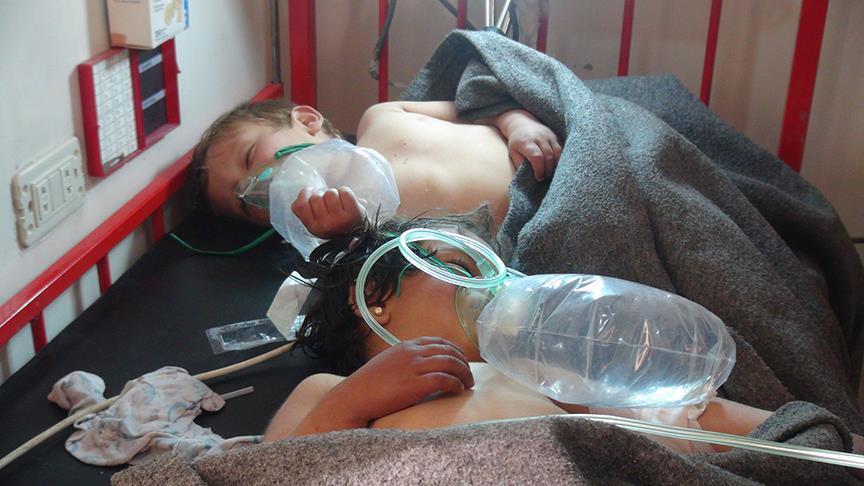Turkey says evidence of sarin gas in Syria attack found
Turkey’s Chemical Warfare Agents Diagnosis and Verification Laboratory confirms findings: Health minister

By Zehra Melek Cat
ERZURUM, Turkey
Concrete evidence of the use of sarin gas in Syria’s Idlib attack on April 4 has been found, Health Minister Recep Akdag said Tuesday.
“Sarin gas metabolite, isopropyl
Akdag said the evidence had been confirmed by the Public Health Institution’s Chemical Warfare Agents Diagnosis and Verification Laboratory.
“Our laboratories identified the metabolite of this chemical warfare agent, sarin gas, in the urine of a Syrian citizen, Sait Hussein, who lost his life, by using two different methods,” he said.
“Our laboratory made the detection in accordance with the standards of the Organization for the Prohibition of Chemical Weapons, confirming that sarin gas was used in Syria.”
The chemical attack by regime forces killed more than 100 civilians and injured around 500 in the opposition-held town of Khan Sheikhoun.
A day after the strike, Turkey invited the World Health Organization (WHO) to send experts to jointly investigate the attack.
WHO officials arrived in Adana province to carry out autopsies on three Syrian bodies at the Adana Forensic Medicine Institute.
On Tuesday, White House officials confirmed that the victims’ symptoms were consistent with “sarin exposure”.
“We saw miosis, or pinpoint pupils, we see frothing at the nose or mouth, we see twitching -- all of those are consistent with nerve agents,” a senior official said on condition of anonymity due to restrictions on talking to the media. “They are not consistent with chlorine.”
She accused Russia of carrying out a cover-up of the attack. “I think it’s clear that the Russians were trying to cover up what happened there,” the official said, stopping short of alleging Russian foreknowledge of the attack.
Russia-Syria ties
However, the officials went past the earlier position of President Donald Trump’s administration in regard to Russian ties to Bashar al-Assad’s regime.
“How is it possible that their forces were co-located with the Syrian forces that planned, prepared and carried out the chemical weapons attack at the same installation and did not have foreknowledge?” a second official said, referring to the air base that was targeted by a U.S. missile strike three days after the chemical attack.
The White House was “very confident that terrorists or non-state actors did not commit this particular attack.”
Instead, it was likely that Assad's forces carried out the attack due to a “manpower deficiency” in western Syria while simultaneously holding Palmyra from Daesh.
In Moscow, President Vladimir Putin said Syria should brace for further U.S. attacks.
“We have information from a variety of sources that such provocations -- I cannot find another word for this -- are being prepared in other parts of Syria,” he told a news conference with Italian President Sergio Mattarella, according to a Kremlin statement.
It was unclear if Putin was referring to a provocation by the U.S., Syrian opposition forces or terror groups such as Daesh.
However, he went on to say the plans involved planting “certain substances” and accusing the Assad regime of using chemical weapons.
Putin likened the U.S. missile strikes to the 2003 Iraq
“The exact same thing is happening now,” he said.
Putin said Russia planned to “officially” address the UN and to call on the international community to investigate the incident.
* Michael Hernandez and Diyar Guldogan contributed to this report from Washington and Ankara respectively.
Anadolu Agency website contains only a portion of the news stories offered to subscribers in the AA News Broadcasting System (HAS), and in summarized form. Please contact us for subscription options.







